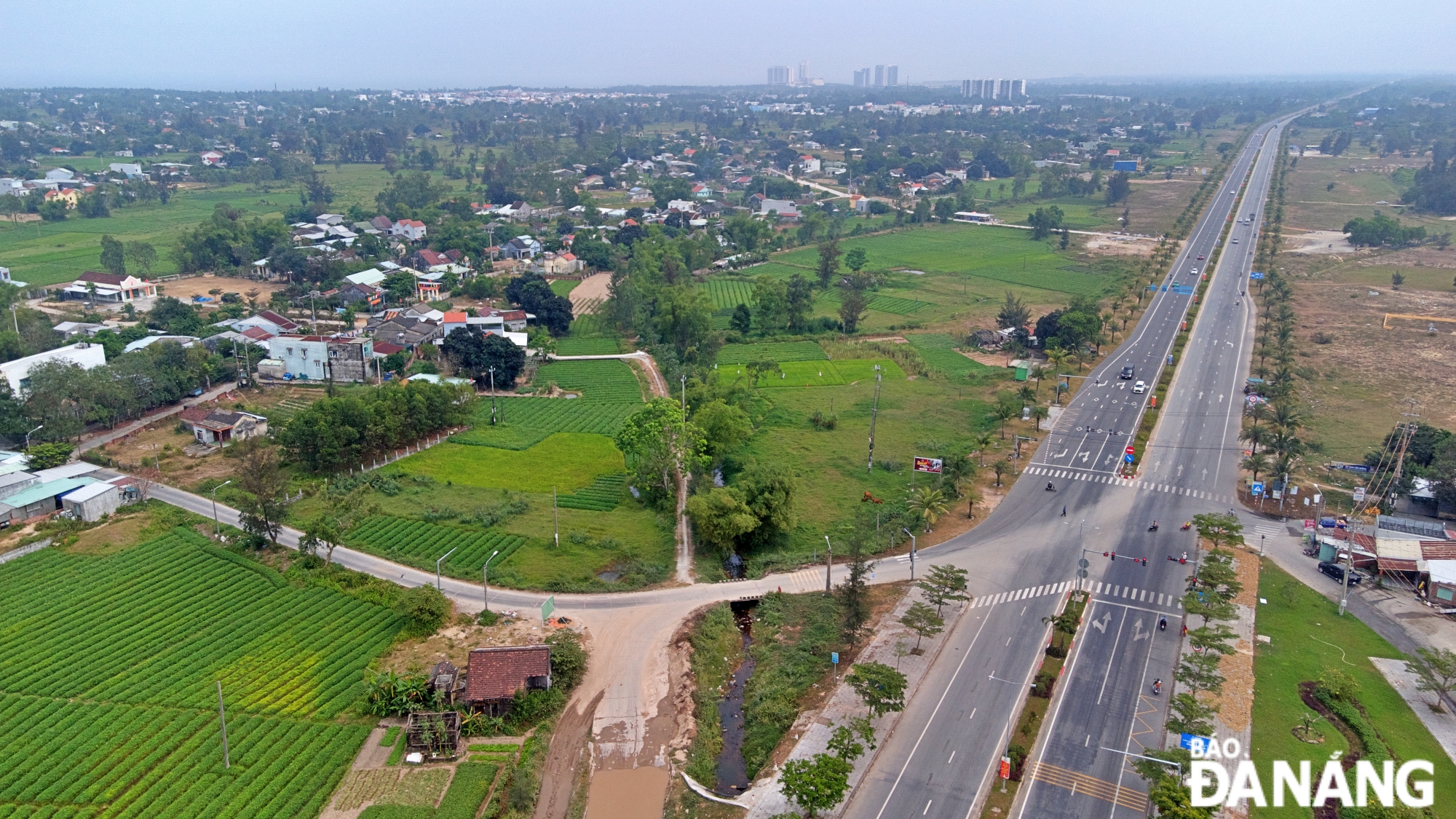Making Da Nang greener
The Da Nang government has approved local adjustments to the city's master plan to 2030, with a vision to 2045. Included are land use planning in such subdivisions as Hi-tech Industry Development Zone, hillside urban residential areas, innovative areas, the Da Nang Bay area, Lien Chieu Port, the ‘green core centre’. It is worth noting that more green spaces will be created for Da Nang after adjustments have been made to the city’s master plan.
 |
| Leaders of local departments and agencies participated in the Da Nang Confederation of Labour-launched tree planting campaign. Photo: P.NGUYEN |
Like other major cities in Viet Nam, Da Nang lacks strategic planning for green growth in urban areas and public entertainment venues due to the rapid growth of urbanization. Therefore, some streets in the city center have few trees. According to the latest data, per capita tree cover in Da Nang is only about 2.53 square meters, while that in class 1 and special urban areas must reach 6 square meters according to national standards. Da Nang aims to become an eco- city, but in reality, the existing tree cover density in the city has yet to meet half of the national requirements.
In its project to build an eco-city, Da Nang sets a goal of achieving its per capita tree cover at least 9.2 square meters by 2030. Hence, the immediate requirement in the city’s planning is to ensure that enough land is set aside for parks and tree planting.
Facing the need for urban greening, district-level authorities in the city have encouraged active participation of businesses, units and local residents to join hands with them in planting trees in residential areas, parks and public outdoor places in recent years. Socialization in tree planting is an effective solution developed by authorities at local level to get local communities engaged with creating more green spaces for urban areas, increasing the density of tree cover in the city, contributing to gradually improving the city’s urban landscapes. Thanks to its efforts to take this positive approach, Son Tra District now has more than 100 orchids, dracontomelons, millettia ichthyochtona and fruit trees that have been planted in parks, stroll gardens, ward-level cultural houses, and other public venues.
In their efforts to achieve the national goal of planting one billion trees in the 2021-2025 period, Lien Chieu, Ngu Hanh Son, Hai Chau, Thanh Khe, and other districts in Da Nang are active in engaging individuals and organizations in planting trees in an attempt to improve the urban landscapes, and create a healthier environment. Recently, more than 1,000 new trees have been planted in the Hoa Khanh Industrial Park located in Lien Chieu District.
Joint efforts of Da Nang’s entire population in creating more urban green spaces and local adjustments for green growth to the city's master plan show a positive signal for Da Nang to make it a great green city. Accordingly, land used for urban public services will increase by approximately 4 hectares while increasing land for urban green spaces by 13 hectares, for healthcare facilities by 2 hectares, for urban pubic green spaces by about 9 hectares, and specialized green spaces by about 11 hectares. Heed will be paid to increasing land for green spaces in the hillside urban subdivision. Green space will be re-arranged to manage surface water of the Hoa Lien Drainage Canal. Importance will be attached to reallocating 3 lakes, and creating more green spaces for urban areas.
As for the local adjustments to the city’s planning for the innovative subdivision, land used for urban public services will be adjusted into green public urban space combined with underground parking in the northwest of the road approaching the Nguyen Tri Phuong Bridge. Special attention will be paid to creating more green spaces for the Da Nang Bayside subdivision in order to expand the northwest of the central square.
Da Nang has taken effective and drastic measures to pour over VND 673 billion into upgrading and renovating the March 29 Park, as well as has made adjustments to the city’s urban planning in efforts to add green to urban environments, and increase land for planting trees while encouraging active engagement of local residents in planting trees. With its synchronous approach, Da Nang is gradually transforming urban landscapes in order to reduce the environmental impacts of concrete, thereby making it greener.
Reporting by HOAI GIANG – Translating by H.L








